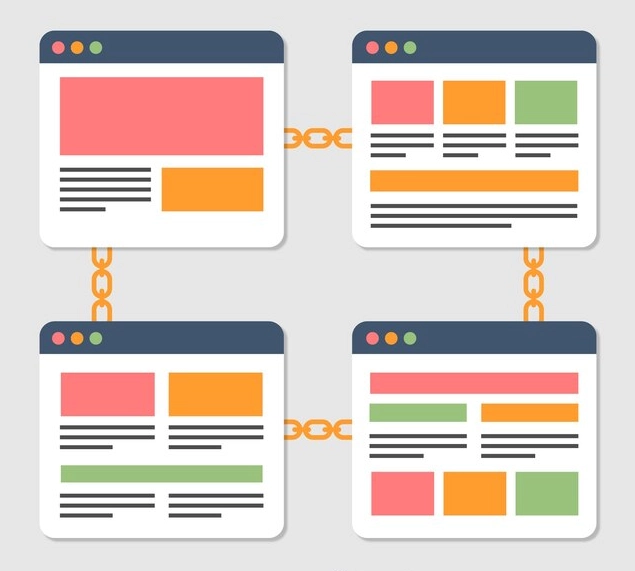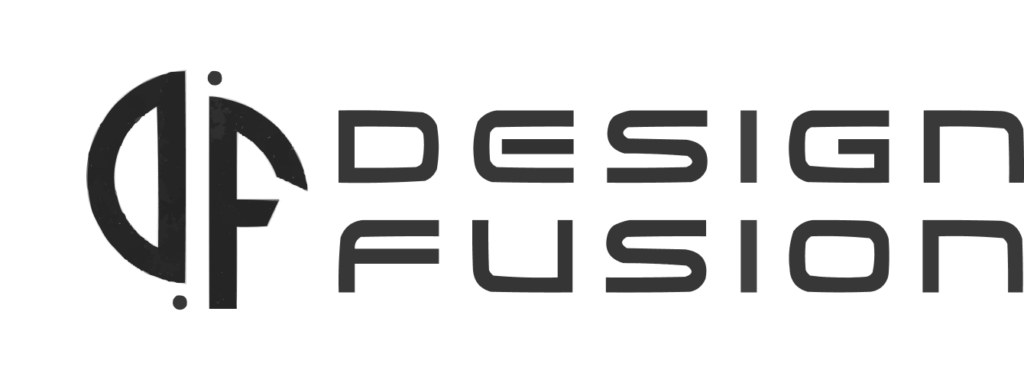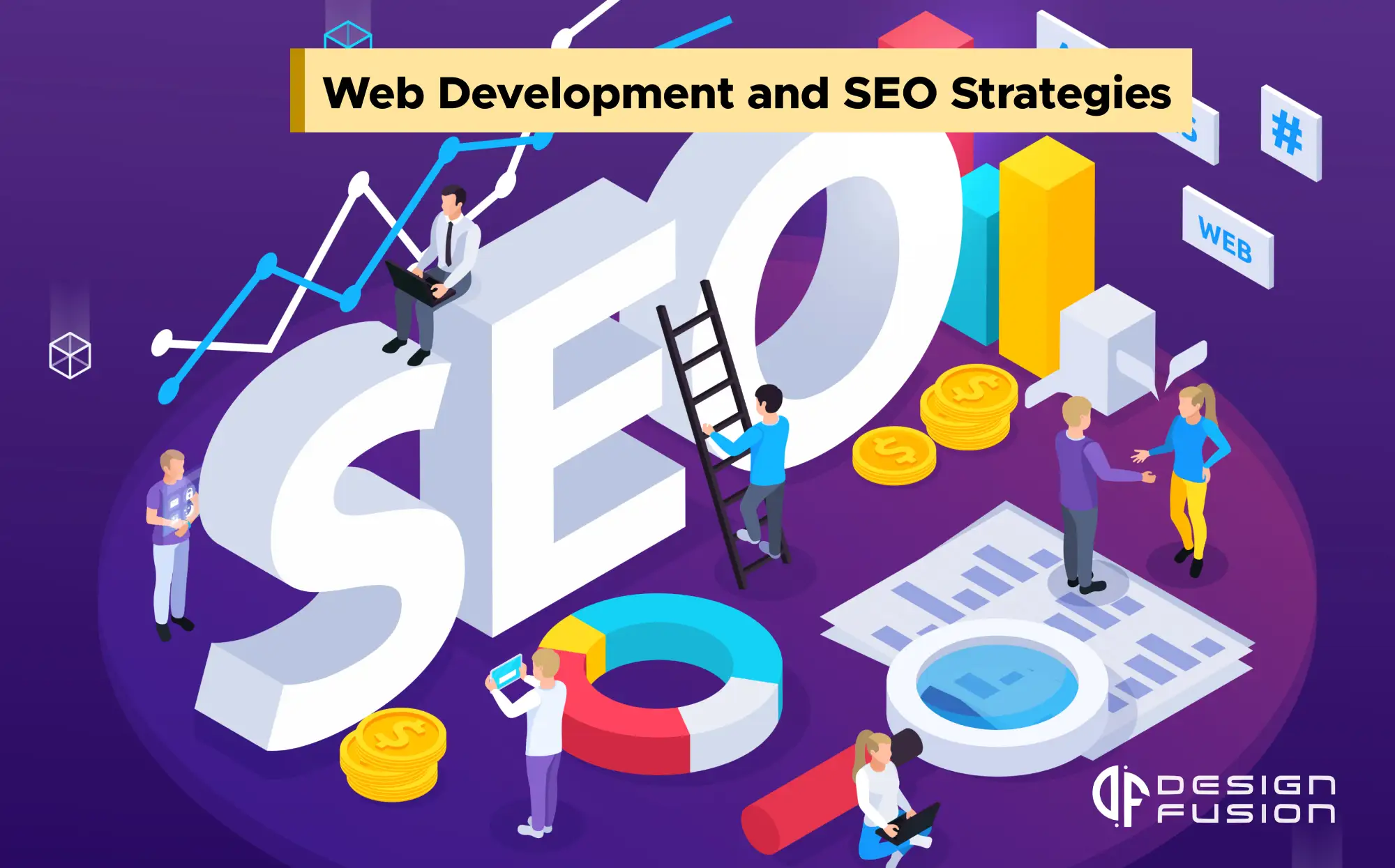In today’s continuously changing digital environment, simply having an attractive website is insufficient for achieving success online. To stand out in a sea of websites, you need to combine effective website development, engaging website design, and a robust Search Engine Optimization (SEO) strategy. In this blog, we will explore the synergy between web development and SEO and how implementing the right strategies can propel your website to higher search engine rankings.
Website Development and SEO: A Dynamic Duo
Website development and SEO are a dynamic duo in the ever-evolving digital landscape. They are two sides of the same coin, working together to create an online presence that not only looks appealing but also performs exceptionally well in search engine rankings. Effective website development ensures that your site is technically sound, with mobile-friendly and responsive designs, fast loading times, and an intuitive user interface. SEO, on the other hand, fine-tunes the content and structure of your website to make it easily discoverable by search engines, driving organic traffic and increasing visibility. Together, these strategies create a powerful synergy that is essential for success in the competitive online world.
The collaboration between website development and SEO is all about providing the best possible user experience. A well-structured website with clear navigation and high-quality content not only keeps visitors engaged but also reduces bounce rates, a critical factor for SEO success. Effective SEO practices, such as optimizing for relevant keywords, meta tags, and schema markup, ensure that search engines can crawl and index your website efficiently.
In return, higher search engine rankings lead to more organic traffic, which, when combined with a user-friendly website, can result in increased conversions, improved brand credibility, and long-term online success. In essence, website development and SEO are inseparable partners, working together to create an online presence that not only looks great but also thrives in the competitive digital landscape.
Let’s delve into the strategies that can help you leverage their synergy:
Mobile-Friendly and Responsive Design:
Mobile-friendly and responsive design is the cornerstone of a successful online presence in today’s digital landscape. It’s not merely a design choice; it’s a strategic imperative. Ensuring that your website functions seamlessly on various devices, from smartphones to desktops, is essential for providing an exceptional user experience. This approach not only reduces bounce rates and keeps visitors engaged but also earns favour with search engines, potentially boosting your site’s visibility and rankings. By embracing responsive design principles, optimizing images, and prioritizing mobile-friendly navigation, you can create a website that adapts gracefully to the diverse preferences and needs of your audience, future-proofing your online presence in an increasingly mobile-centric world.
Page Speed Optimization:
Page speed optimization is not just a technical concern but a critical element in the success of your website. In today’s fast-paced online environment, where users expect instant access to information, a slow-loading website can be detrimental. Swift-loading pages not only provide an exceptional user experience but also positively impact your website’s search engine rankings. High bounce rates, lower conversion rates, and frustrated users are often the consequences of sluggish page load times. To address this, strategies such as image optimization, content delivery networks (CDNs), minimizing HTTP requests, and leveraging browser caching can be employed to accelerate your website’s performance. By prioritizing page speed optimization, you not only cater to user expectations but also improve your website’s SEO standing, ultimately leading to increased engagement and success in the online arena.
SEO-Friendly URL Structure:
Creating an SEO-friendly URL structure is a fundamental step in optimizing your website for search engines and improving user experience. SEO-friendly URLs are not only clean and concise but also include relevant keywords that give users and search engines a clear indication of the page’s content. A well-structured URL is easier to understand, share, and remember. It also contributes to higher click-through rates in search engine results pages. To achieve this, it’s essential to use descriptive keywords in your URLs, avoid lengthy strings of numbers or random characters, and use hyphens to separate words for clarity. By implementing an SEO-friendly URL structure, you enhance your website’s search engine visibility and make it more user-friendly, ultimately driving more organic traffic to your site.
High-Quality Content:
High-quality content is the backbone of a successful online presence. It’s not just about quantity; it’s about providing valuable, relevant, and engaging information to your audience. When it comes to web development and SEO, high-quality content is a potent tool for attracting and retaining visitors while also improving search engine rankings. Search engines prioritize content that is informative, well-researched, and original. Such content not only keeps users engaged but also encourages them to share, link, and interact with your website. A consistent content strategy that caters to the needs and interests of your target audience can establish your website as an authoritative source in your niche, ultimately driving organic traffic, building trust, and contributing to the overall success of your online venture.
Optimize Images and Multimedia:

Optimizing images and multimedia elements is a crucial aspect of web development and SEO. Images and multimedia content can greatly enhance user experience and engagement on your website, but if not handled correctly, they can also slow down your site’s performance. To strike the right balance, it’s essential to compress and optimize images to reduce their file sizes without compromising quality. Additionally, using descriptive alt tags for images not only makes your content more accessible to users with disabilities but also contributes to SEO by providing context to search engines. Properly formatted multimedia files, such as videos, should be optimized for quick loading times. By ensuring that your website’s multimedia elements are optimized, you not only enhance user experience but also improve your website’s page speed, which is a crucial factor in search engine rankings.
Schema Markup:
Schema markup is a behind-the-scenes hero in the world of web development and SEO. It might not be as visible as eye-catching designs or compelling content, but it plays a crucial role in enhancing the way search engines understand and present your website’s information. By adding structured data to your web pages, schema markup provides context and meaning to your content, resulting in more informative and visually appealing search engine results. Whether you’re running a local business, an e-commerce site, or a blog, schema markup can help you stand out in search results, improve user engagement, and indirectly boost your SEO efforts by increasing click-through rates and reducing bounce rates. In a digital landscape where user experience and visibility are paramount, harnessing the power of schema markup is a savvy strategy to elevate your website’s performance and presence.
Common Types of Schema Markup:
- Product Schema: Used for e-commerce websites to display product information, including price, availability, and reviews in search results.
- Local Business Schema: Helps local businesses provide essential details like address, phone number, and business hours, making it easier for users to find them in local searches.
- Article Schema: Enhances articles and blog posts by displaying publication dates, author information, and headline in search results.
- Event Schema: Useful for promoting events by showcasing event details, including dates, location, and ticket information.
Implementing Schema Markup:
- Use Schema Markup Generators: Various online tools and generators can help you create schema markup code for your specific content type.
- Add Markup to HTML: Insert the generated schema markup code into the HTML of your web pages. You can place it in the header or body of the page, depending on the type of content you’re marking up.
- Validate and Test: After implementation, use Google’s Structured Data Testing Tool to ensure that your markup is error-free and displaying as intended.
- Submit to Google: To expedite the indexing of your schema markup, submit the updated pages to Google Search Console.
Effective Internal Linking:

Effective internal linking is the secret sauce of a well-structured and user-friendly website. It involves strategically connecting pages within your website through hyperlinks, offering numerous advantages. Firstly, it facilitates navigation for users, helping them discover more of your content and stay engaged longer. Secondly, search engines use internal links to crawl and index your site, which can positively impact SEO. By linking related pages with descriptive anchor text and maintaining a logical hierarchy, you create a seamless web of information that benefits both users and search engines. Effective internal linking enhances user experience, strengthens your website’s authority, and ultimately contributes to higher search engine rankings.
User Experience (UX) Design:
User Experience (UX) Design is the art and science of creating websites and digital products that prioritize the needs and preferences of users. It involves a holistic approach to design, focusing on the overall feel, functionality, and usability of a digital interface. A well-executed UX design considers aspects such as intuitive navigation, clear content presentation, accessibility, and responsiveness across various devices. The primary goal is to ensure that users can effortlessly and enjoyably interact with a website, app, or product. UX design not only enhances user satisfaction and engagement but also contributes to higher search engine rankings, as search engines take user experience signals into account when evaluating a website’s quality. In essence, UX design is a pivotal element of web development and SEO, as it directly impacts user behaviour and the overall success of an online presence.
Social Media Integration:
Social media integration is a vital component of modern web development and online marketing strategies. It involves seamlessly incorporating social media platforms into your website to enhance user engagement and reach a broader audience. By embedding social sharing buttons, live feeds, or comment sections, you encourage visitors to interact with and share your content, thereby increasing its visibility and reach across social networks. Moreover, social media integration fosters a sense of community and trust among users, as they can connect with your brand on platforms they already use and trust. These interactions can indirectly boost your SEO efforts, as search engines consider social signals like shares and likes as indicators of content quality and relevance. Thus, social media integration serves as a powerful synergy between web development and SEO, strengthening your online presence and expanding your digital footprint.
Backlink Strategy:
A well-planned backlink strategy is a cornerstone of successful SEO and an essential element of web development. Backlinks, also known as inbound or incoming links, are links from external websites that point to your site. They serve as a vote of confidence and credibility in the eyes of search engines, indicating that your content is valuable and relevant. However, not all backlinks are created equal. Quality matters more than quantity, and the right backlinks from authoritative and reputable sources can significantly impact your search engine rankings.
To execute an effective backlink strategy, it’s crucial to:
- Focus on Quality: Seek backlinks from websites with high domain authority and relevance to your content or industry.
- Create High-Quality Content: Content that’s informative, valuable, and shareable naturally attracts backlinks.
- Outreach and Networking: Build relationships with influencers and other website owners in your niche, and politely request backlinks when relevant.
- Engage in guest blogging by providing guest articles to reputable websites within your field, and remember to include a backlink to your website
- Monitor and Disavow: Regularly monitor your backlink profile and disavow low-quality or spammy links to maintain a healthy link profile.
- Diversify Anchor Text: Use a variety of anchor text (the clickable text of a link) that includes relevant keywords but doesn’t look overly optimized.
A well-executed backlink strategy can significantly improve your website’s search engine rankings, increase your online authority, and ultimately drive more organic traffic to your site. However, it’s essential to approach backlink building ethically and focus on quality over quantity to ensure long-term SEO success.
Conclusion:
In the competitive online landscape, a well-optimized website is the key to higher search engine rankings. By harmonizing website development and SEO strategies, you can create a website that not only looks great but also performs exceptionally well in search engine results. Remember, it’s an ongoing process, and staying up-to-date with the latest web development and SEO trends is essential to maintain and improve your website’s search engine rankings. So, invest the time and effort into both website development and SEO to reap the rewards of a successful online presence.


